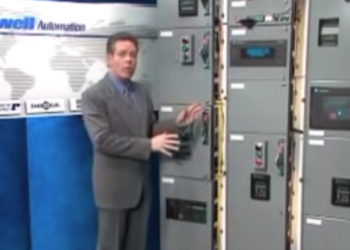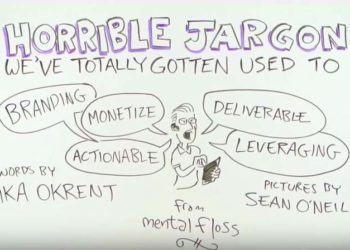Last year, we looked at the groundbreaking work of Rockwell Automation’s Retro Encabulator, a significant improvement over 1977’s Turbo Encabulator, which brought “perfection to the crudely conceived idea of a transmission that would not only supply inverse reactive current for use in unilateral phase detractors, but would also be capable of automatically synchronizing cardinal grammeters.”
Confused? Well, that’s the joke, dating back to at least 1944 and the British Institution of Electrical Engineer’s Student’s Quarterly Journal (yes, the article has a DOI, and can be found in the IET Digital Library, 10.1049/sqj.1944.0033). The encabulator is a fictional electromechanical machine that’s largely used for the propagation of lengthy strings of meaningless technobabble. Or as the original authors put it:
The original machine has a base-plate of prefabulated aluminite, surmounted by a malleable logarithmic casing in such a way that the two main spurving bearings were in a direct line with the pentametric fan. The latter consisted simply of six hydrocoptic marzlevanes, so fitted to the ambifacient lunar waneshaft that side fumbling was effectively prevented. The main winding was of the normal lotus-o-delta type placed in panendermic semi-bovoid slots in the stator, every seventh conductor being connected by a non-reversible tremie pipe to the differential girdlespring on the “up” end of the grammeters.
As a community that thrives on our own jargon, let alone the jargon in the research journals and books we publish, hopefully we can all appreciate this bit of academic humor. Below find the three main video contributions to the lore of the encabulator, beginning with the original turbo encabulator, 1987’s improved retro encabulator, and, released earlier this year, the latest innovation in encabulation, the hyper encabulator, which should fulfill all your encabulation needs.
Discussion
3 Thoughts on "A History of Encabulation — Advancements From the Turbo Encabulator and the Retro Encabulator Have Led to the Hyper Encabulator"
The TV series Patriot did a couple of wonderful versions of this:
https://www.youtube.com/watch?v=P5-9Rfrui9A&ab_channel=VernWalther
and
Fry and Laurie and Not The Nine O’clock News also went with something akin to this. With Fry and Laurie being heavy on the NSFW innuendo.
Fry and Laurie Hardware Shop
https://www.youtube.com/watch?v=xuEef3NGw30&ab_channel=jolietv
Not The Nine O’clock News HiFi Shop
The encabulator is the definition of a prefectly cromulent invention.



